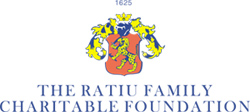UCL School of Slavonic and East European Studies, University College London, 7th Annual International Postgraduate Conference
Inclusion Exclusion
Thursday 16 February 4:30 – 6:00: Panel C2: Communism in Central and Eastern European Countries
Balázs Apor (European University Institute, Florence): ‘Popular attitudes to the cult of Mátyás Rákosi in Communist Hungary 1944-1955’
The paper is a preliminary attempt to question the efficacy of the all-inclusive propaganda of the Rákosi-cult in a Hungarian context. The cult propaganda was meant to reach all layers and particular groups of Hungarian society, as it was perceived by the communist political system. Different images of the leader were projected towards workers, the peasantry, intellectuals and the military, but special attention was paid to the way the cultic message was transmitted to children, the youth and to women. On the other hand, particular segments of society, defined as socially alien, were excluded from among the target audiences of the communist leader cult. The old nobility, members of the pre-war political elite and the old bureaucracy, recruits of the gendarmerie, members of the clergy, and peasants stigmatised as kulaks were all denied access to the world of the leader cult, unless they underwent a radical – and at the same time credible – political conversion. The primary aim of the paper is to reveal how the particular audiences integrated into the realm of the leader cult reacted to the practices and the various manifestations of the cult of the Hungarian Party Secretary. The article is mostly based on so-called public opinion reports, dubbed mood reports in official rhetoric, that were gathered by the agitprop department of the Communist Party. Three different types of responses will be discussed in the text: affirmative attitudes to the leader cult, resistance to the cult, and indifference, or ignorance to cultic practices or cult artefacts.
Positive responses were frequently in close proximity with the official cult discourse, and in some cases they were strikingly similar to the actual guidelines of the propaganda department prescribing how the leader’s pronouncements should be interpreted. Utterances of this kind should thus be handled with extra care. Resistance to the Rákosi-cult, and dissatisfaction with the cult’s manifestations could take various distinct forms. Negative opinions about the leader were often articulated in public or private conversations, despising graffiti frequently appeared in public spaces, insulting fliers were occasionally distributed, and instances of damaging the party leaders’ portrays were often reported to the central party organisations. The paper will also pay special attention to the widespread indifference certain manifestations of the leader cult were perceived by. It seems that the complex symbolism of the leader cult was often significantly modified before it reached the target audience, and it was sometimes completely lost in the web of cult promotion. The attempts of the regime to popularise its leaders often met with pure ignorance, and the lack motivation from the part of society to adhere to cultic practices.




